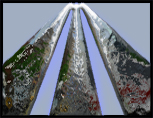Convergence - Where Will It Lead?
Alarm Transmission Systems (ATS) are increasingly adding capabilities that would traditionally have been performed by dedicated devices, for example CCTV verification.
At the same time Control and Indicating Equipment (CIE, or control panels in plain English) feature built in IP communication functionality and are giving us access to Home Automation integration and more.
This type of blurring of what would previously have been clear and distinct roles that equipment played is becoming much more common and is set to extend even further in the future.
We are already in a position where individual cameras and detectors of all types can communicate directly with the software at an Alarm Receiving Centre (ARC) without utilising at ATS if they so wished.
Installers are being empowered with the ability to not only connect instantly to a remote CIE to analyse a potential fault, but to be in a position to connect directly to a detector or camera or any other component of a system to amend settings, re-enable or even repurpose a generic multi-purpose device to enable the maximum potential protection for clients at all times.
This type of convergence leads to some fantastic opportunities and will mean that the next few years will certainly be interesting. It will also however, mean that those whom are writing the standards to which we each adhere, will have to write them without constraints on the form of equipment utilised in some cases. A very tough ask of them when they are trying to give reasonably specific guidance.
Confusion or cohesion?
Given this merging of functions and the seemingly inevitable move towards every component being addressable where does that leave our suppliers?
Will there be a place for specialised equipment if the same function is provided to the same standard in an integrated manner by another supplier?
Does this lead to an eventual move away from processing of alarms by dedicated CIE at the protected property to instead provide processing 'in the cloud' at the ARC or any other centralised location?
Will instant and thorough control of remote devices by installers lead to a change in business models when attendance is much reduced?
Does dedicated equipment improve the structure of the overall system or benefit us in another way?
Will ATS suppliers be bypassed or will they 'lead the revolution'?
Will we see less competition as a result or more?
As always, please feel free to discuss, sharing your thoughts and views on this subject…



2 Comments
Recommended Comments